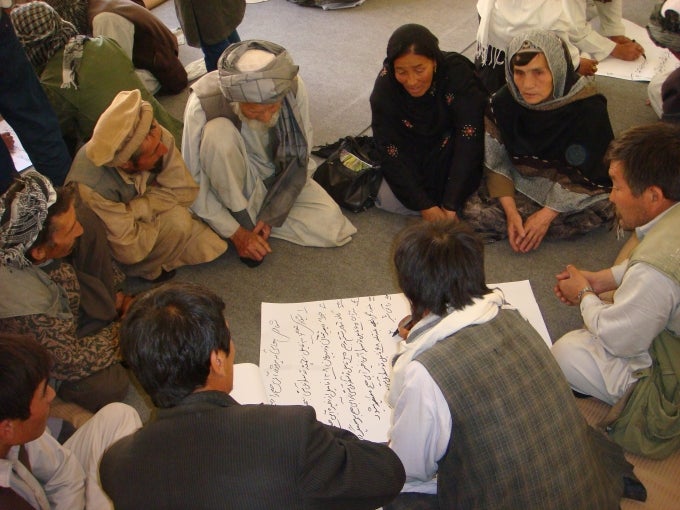
Will rural communities in Afghanistan be deprived of development services upon the completion of the National Solidarity Programme (NSP) in the Ministry of Rural Rehabilitation and Development (MRRD)?
What will happen to the Community Development Councils (CDCs) established in rural communities to execute people’s development decisions and priorities?
Will our country continue to witness reconstruction of civic infrastructure?
These were some of the questions that troubled thousands of villagers as the NSP neared its formal closure date - NSP had delivered development services in every province of Afghanistan for 14 years.
To address these questions and allay their concerns, the Government of the Islamic Republic of Afghanistan formally launched the Citizens’ Charter Program on September 25, 2016 to sustain the uninterrupted development and reconstruction in Afghanistan.
A promise of partnership between the government and communities, the Citizens’ Charter is a foundation for realizing the government’s development vision. It is a commitment to provide every village in Afghanistan with basic services, based on community prioritization. Citizens, therefore, expect this national program to construct and/or restore public infrastructure, and to provide them with essential health services, quality education, safe drinking water, access to electricity, and other civic amenities seen as essential to basic human needs.
Haji Nik Muhammad, the CDC Chairperson in Panjwai district in Kandahar Province noted, “We have progressed very well with the NSP. We hope that with the launch of the Citizens’ Charter, we can work with the government to address more of our development challenges.”
The Citizens’ Charter has been designed to ensure community development, economic growth, and social welfare on a much broader scale across the country.
The Charter’s Objectives
The Citizens’ Charter aims to reduce the gap between villages and cities. It will, empower both rural and urban citizens equally to identify their own development priorities and encourage them to actively participate in the implementation of the development projects they have prioritized.

Dimensions of the Charter
The Citizens’ Charter will be implemented in the next 10 years, covering one third of the country in its first phase. It is a ‘whole of government’ program, bringing together at least six ministries for implementation. It is committed initially to providing a minimum service package of six essential services: health, education, water management (irrigation, flood prevention, sanitation and provision of safe water), renewable energy, connection of cities and villages, and propagation of small agricultural infrastructures.
The Charter is underlined by principles of balanced development and equitable access. The program will accord due attention to the most vulnerable groups, including the displaced, returnees, women, and nomads. The role and participation of women is one of the most prominent working principles of the Charter. The MRRD would like to see women’s participation as CDC office bearers increase to 50 percent.
The Charter will build upon the community platform created through NSP over the past 14 years and strengthen the partnership between government and communities. CDCs will be the means by which citizens can demand services, hold line agencies accountable, and ensure that the poorest and most vulnerable can access services.
The transition from NSP activities to those under the Charter means that there will be increased emphasis on linking CDCs with local government institutions and ministries following a systems-based rather than project-based approach. CDCs will focus much more in the future on monitoring and leveraging services from the various line ministry programs and other national priority programs.
Funding
The government is the first donor and has allocated $130 million for the program so far. In addition, the Afghanistan Reconstruction Trust Fund (ARTF) has committed $400 million and the World Bank Group’s International Development Association (IDA) $100 million in the first phase, a duration of four years.
A Final Thought
The primary objective of the Citizens’ Charter is to generate citizen momentum for sustainable development. The program is determined to achieve this goal by making people actively involved in the implementation process of their own development projects. The honest commitment between people and government on a larger scale will pave the way for ensuring development for all. It is hoped that soon we will be able to banish poverty from our society.

Join the Conversation